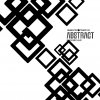... (not sure why stock photos from Adobe only come in AI, they should be available in PS as well). This makes it hard for those of us who only us PS (I do not know how to use AI as of yet, only ever learned PS CS4). ...
While this observation doesn't answer your question, I have to point out that it is simply not true that stock images from Adobe are only available as AI files. Photos are usually made available as JPG files, but vector art (ie, "line art", "illustrations", etc.) are usually made available at *.AI or *.EPS files.
This can be easily seen by going to stock.adobe.com. Search on some theme such as "sunset beach" by typing these words into the search box at the top of the page, and then click on several photos that are presented to you. Look at the image properties info box that opens below each preview image. You will likely see a mixture of many different file types. My guess is that you accidentally downloaded, and then presumably purchased, a vector illustration.
However, this is no problem because Photoshop can easily import *.AI files.
As an example that you can work on, I downloaded this free vector file (in *.ai format):
http://www.freepik.com/free-vector/...713256.htm#term=illustrator&page=1&position=3
Unfortunately, I don't have the exact version of Photoshop that your are using available on my computer, so I used the oldest version of PS that I have easily available to me, PS CC 2014. The details might be slightly different between my version of PS and yours, but the general idea should be the same.
The first thing I did was to use file/open to open this AI file in PS. I left the import / conversion settings at their default values. It opened successfully, put the following image at the bottom of my layer stack, and named it, "Layer 1":

First, let's turn this into something that hopefully looks something like your black lizard example. The easiest way to do this is to place a threshold adjustment layer above "Layer 1". After moving the threshold slider a bit to the right, the result is:

OK ... I know it doesn't look like a bunch of black and white lizards, LOL, but at least it's black and white

.
There are many, many ways to change the black areas to green, as per your request. I'm sure other folks will join in and tell you their favorite method, but what I did was to add a "Levels" adjustment layer above the "Threshold" adjustment layer, and make the changes as shown in the attached screen grab:

In other words, select the green channel and push the black slider in the lower left corner of the "levels" palette to the get the brightness of green that you like.

If you want to change the hue, eg, perhaps to a slightly blueish green, also select the blue channel and push the corresponding slider to the right for that channel, as well. Adjust to taste.

HTH. If you have any questions, please feel free to ask.
Cheers,
Tom M
PS - If your black and white lizards differ from my black squares in some way other than just their shape (eg, maybe its really a continuous tone grayscale image, not a true black-and-white image, please upload the *.ai file that you are working with.





